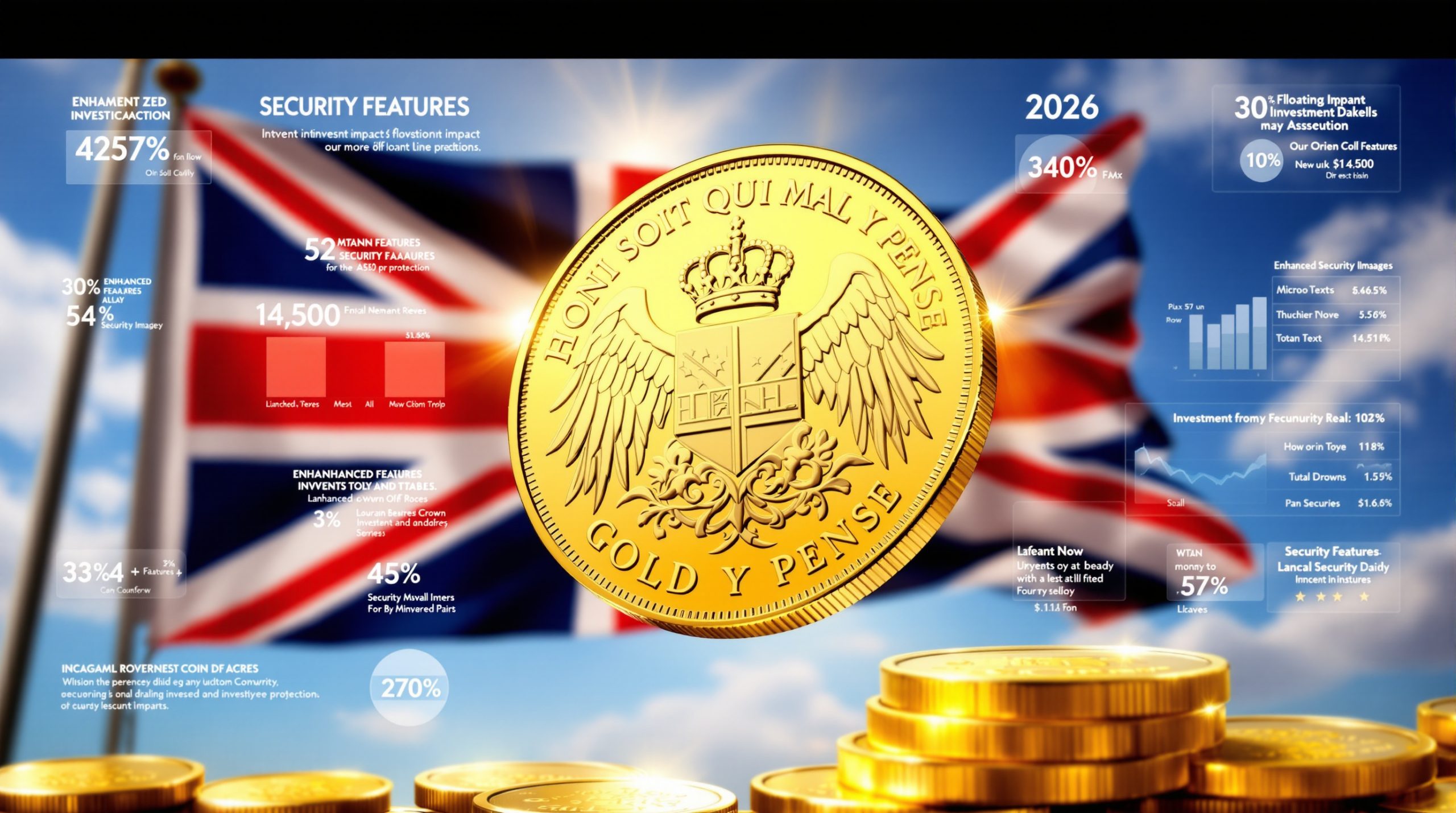What Happened to Precious Metals in April 2025?
April 2025 has marked an extraordinary period of volatility in precious metals markets, with gold reaching the unprecedented $3,500 level before experiencing significant pullbacks. This volatility wasn't a random occurrence but rather the result of several macroeconomic factors, including proposed tariff announcements that initially triggered a market-wide selloff before precious metals staged a dramatic rebound.
The surge in gold prices represents a continuation of the strong uptrend that began earlier in the year, with the yellow metal now posting approximately 25% gains year-to-date. Such performance stands in stark contrast to broader equity markets, which have struggled to maintain momentum in an increasingly uncertain economic landscape.
April's Price Action Highlights
Gold's journey in April 2025 has been nothing short of remarkable, characterized by:
- A historic peak at $3,500 per ounce before experiencing volatility
- Four separate trading days witnessing $100+ daily gains within a single two-week period
- An initial selloff followed by an impressively strong recovery
- Overall gold performance maintaining approximately 25% year-to-date gain
- The gold-to-silver ratio reaching 100:1, representing a historically extreme level that typically doesn't persist long-term
This unusual price action has caught many analysts off guard, particularly those who maintained conservative price targets even as gold broke through previous resistance levels. The volatility has created both challenges and opportunities for investors trying to navigate this dynamic market environment.
Why Are Precious Metals Markets Experiencing Volatility?
The extraordinary price movements in precious metals markets during April 2025 can be attributed to several interconnected factors that have reshaped the global financial landscape. Understanding these drivers provides crucial context for investors seeking to position themselves appropriately.
Market Deleveraging Events
The initial selloff observed across all asset classes, including precious metals, demonstrated a classic deleveraging event where overleveraged positions were forcibly unwound. This pattern mirrors previous market corrections, including the 2008 financial crisis, where even traditionally safe-haven assets temporarily declined during acute liquidity crunches.
"What we're seeing is forced liquidation across the board," explains market analyst Rebecca Chen. "When margin calls hit, traders often must sell their winning positions—like gold—to cover losses elsewhere, creating temporary disconnects from fundamentals."
This deleveraging process typically creates short-term volatility but often sets the stage for stronger subsequent moves as positions are rebuilt on more sustainable foundations.
Dollar Index Weakness
A significant driver behind gold's stellar performance has been the substantial decline in the US Dollar Index:
- Dollar Index peaked above 110 in early January 2025
- Currently trading around 98 (as of April 2025)
- Represents approximately 10-12% decline year-to-date
This dollar weakness has multiple causes, including shifting interest rate expectations, growing concerns about the U.S. fiscal position, and increasing de-dollarization efforts by various countries seeking to reduce dependence on the greenback for international trade.
Gold, priced in dollars, naturally benefits from dollar depreciation as it takes more units of a weakening currency to purchase the same amount of gold. This inverse relationship has been particularly pronounced in 2025, amplifying gold's upward momentum.
Institutional Positioning
Despite gold's strong performance, market analysis suggests institutional investors remain significantly underweight precious metals:
- Gold represents approximately 9.5% of the TSX index
- Average portfolio managers maintain minimal gold exposure (typically under 1%)
- Analyst price targets for gold have not yet been adjusted upward to reflect current market prices
This institutional underexposure creates potential for further upside as fund managers may need to increase allocations simply to maintain neutral weightings relative to benchmarks. The lag in analyst price target adjustments also suggests potential for positive surprises as revised forecasts catch up to market realities.
How Does This Compare to Previous Market Cycles?
To gain perspective on current market conditions, it's helpful to examine historical parallels and cycles that may inform our understanding of where we stand in the broader precious metals market cycle.
Historical Parallels to 2000-2002
Current market conditions share striking similarities with the 2000-2002 period, which marked the beginning of a multi-year commodity bull market:
- The TSX is beginning to outperform the S&P 500 after years of underperformance
- We're seeing rotation from technology/growth sectors to resource sectors
- Dollar weakness is supporting commodity prices across the board
During that earlier period, commodity-related equities outperformed broader markets for nearly a decade, suggesting the potential for a similarly extended cycle if historical patterns repeat.
"The resource cycle tends to be longer than many investors expect," notes commodities strategist Michael Zhang. "Once these trends take hold, they often run for 5-7 years before meaningful reversals occur."
TSX vs. Dow Jones Historical Context
For context on current market positioning:
- In 2007, the TSX and Dow Jones were at equivalent levels
- Current levels (April 2025): Dow at approximately 40,000 vs. TSX at 24,000
- This 16,000-point gap represents potential for mean reversion if historical relationships reassert themselves
This divergence highlights the extent to which resource sectors have underperformed relative to U.S. large-cap stocks over the past market cycle. If we're entering a period of mean reversion, significant outperformance from resource-heavy indices like the TSX could lie ahead.
Mining Sector Clock Position
Industry veterans often use the mining sector cycle clock analogy (where 12:00 represents cycle peak and 6:00 represents optimal buying opportunity) to visualize current positioning:
- Current position: Approximately 5-6 o'clock
- This indicates early-to-mid bull market phase
- Junior miners showing early signs of outperformance (TSX Venture up 10% YTD)
- Still far from the 9-10 o'clock position that would signal excessive speculation
This framework suggests we're still in relatively early stages of a precious metals bull market, with significant potential upside before reaching the speculative excesses that typically mark cycle peaks.
What's Happening with Silver and Other Precious Metals?
While gold has captured most headlines, other precious metals offer compelling opportunities and insights into the current market cycle.
Gold-to-Silver Ratio at Extreme Levels
The gold-to-silver ratio has reached approximately 100:1, a level typically only seen during crisis periods. For context, this means it takes 100 ounces of silver to buy just one ounce of gold.
Historically, this extreme ratio has not persisted long-term, suggesting potential outperformance for silver relative to gold in coming months. The long-term average for this ratio is closer to 60:1, indicating silver may need to appreciate significantly to restore normal relationships.
"Silver's dual role as both monetary and industrial metal creates unique dynamics," explains metallurgist Dr. Sarah Patel. "The current extreme ratio reflects fear-driven monetary demand for gold, but industrial silver demand remains resilient despite economic concerns."
Platinum Group Metals Opportunity
The platinum group metals (PGMs) present another intriguing situation:
- Platinum currently priced at approximately one-third the price of gold ($1,150 vs. $3,400)
- This represents a significant deviation from historical norms, where platinum typically traded at a premium to gold
- The platinum-to-gold ratio sits at 0.34, compared to a historical average closer to 1.1
- Platinum and palladium sectors showing signs of capitulation, potentially offering value opportunities
The extreme undervaluation of platinum relative to gold appears to reflect concerns about automotive demand transitioning away from catalytic converters as electric vehicles gain market share. However, platinum's industrial applications extend well beyond automobiles, including jewelry, electronics, medical devices, and emerging green hydrogen technologies.
Junior Mining Sector Developments
The junior mining sector, often the last to move in precious metals bull markets, is showing early signs of life:
- TSX Venture (heavily weighted in junior miners) up 10% YTD while S&P is down
- Current TSX Venture level: approximately 650
- Historical context: peaked at 3,300 in 2007
- Technical analysis shows potential long-term inverse head and shoulders pattern forming with a neckline around 900-950
Junior miners typically offer leverage to rising metals prices but come with higher operational and financing risks. The sector's early outperformance suggests smart money may be positioning ahead of broader recognition of the resource cycle shift. For newcomers interested in investing in mining stocks, this presents both opportunities and challenges.
What Should Investors Consider for Mid-2025?
As we look toward the remainder of 2025, several strategic considerations emerge for investors seeking to navigate the precious metals landscape effectively.
Contrarian Positioning Opportunities
Market sentiment analysis suggests widespread expectations for gold to pull back to its 200-day moving average (approximately $2,700-2,800). Contrarian thinking suggests this unanimous expectation may not materialize as anticipated.
"When everyone expects the same scenario, something else often happens," notes behavioral finance specialist Dr. Emma Rodriguez. "The consensus view serves as a psychological anchor that can create opportunities for those willing to challenge prevailing narratives."
This market psychology dynamic creates potential for continued upside surprises if gold maintains strength above widely watched technical levels. For a more detailed perspective, recent gold market analysis 2024-2025 provides valuable context for current conditions.
Portfolio Allocation Strategies
For investors looking to position themselves appropriately:
- Consider dollar-cost averaging into physical precious metals to reduce timing risk
- Evaluate silver and silver mining equities for potential outperformance as the gold-to-silver ratio normalizes
- Assess platinum group metals for contrarian value opportunities given extreme undervaluation relative to gold
- Maintain patience with junior mining positions, which typically require longer investment horizons
- Consider dividing allocations between producers (for current cash flow) and developers (for optionality)
Important Disclaimer: The following represents opinion and analysis, not investment advice. All investments involve risk, and past performance does not guarantee future results. Consult with a qualified financial advisor before making investment decisions.
Chinese Demand Factor
A significant new factor in this precious metals bull market appears to be increased Chinese demand, both at governmental and retail levels:
- Chinese central bank gold purchases have consistently exceeded 10-15 tonnes monthly throughout 2024-2025
- Retail gold demand in China has surged 35% year-over-year according to World Gold Council data
- Chinese mining companies increasingly acquiring assets globally to secure supply chains
This represents a potential structural shift in precious metals markets that many Western analysts have not yet fully incorporated into their models. The combination of official sector purchases and growing retail demand creates a robust floor for prices even during corrective phases.
How Might the Rest of 2025 Unfold for Precious Metals?
While forecasting markets is inherently challenging, several indicators provide clues about potential developments for the remainder of 2025.
Market Cycle Progression
The current precious metals bull market appears to be in its early-to-middle stages, with several characteristics suggesting significant upside potential remains:
- Major producers not yet making significant acquisition moves (typical of mid-cycle behavior)
- Junior mining companies still trading at relatively depressed valuations (particularly developers with defined resources)
- Institutional investors remaining underweight the sector (creating potential buying pressure as allocations normalize)
- Mining stock ETFs experiencing outflows despite rising metal prices (indicating retail participation remains limited)
These conditions contrast sharply with typical late-cycle indicators like premium-priced acquisitions, easy financing for exploration-stage companies, and widespread retail investor participation. Understanding junior mining strategies becomes increasingly important as the cycle progresses.
Potential Catalysts for Second-Half 2025
Several potential catalysts could drive precious metals performance in the second half of 2025:
- Analyst price deck revisions for gold and silver (currently lagging spot prices significantly)
- Continued dollar weakness if global de-dollarization trends accelerate
- Reallocation from technology/growth sectors to resources as relative performance shifts
- Potential monetary policy shifts in response to changing economic conditions
- Geopolitical developments affecting resource security and supply chains
The interplay between these factors will likely determine both the magnitude and timing of precious metals price movements through year-end. For a comprehensive view, recent global commodities insights can provide valuable perspective on these market dynamics.
Silver's Potential Outperformance
With the gold-to-silver ratio at extreme levels (100:1), historical patterns suggest silver may outperform gold in the coming months. This pattern has repeated across multiple market cycles, with silver typically lagging gold initially before catching up with explosive moves.
Silver mining equities could offer significant leverage to rising silver prices, particularly as most are not pricing in higher silver prices in their valuations. Companies with high silver exposure relative to other metals may benefit most directly from ratio normalization.
"Silver's smaller market size makes it more responsive to capital flows once momentum builds," explains mining equity analyst Jason Thompson. "A relatively modest allocation shift from gold to silver could produce outsized price effects due to the limited size of the silver market."
FAQ: Gold and Silver Market Outlook
Why hasn't silver kept pace with gold in 2025?
Silver often lags gold in the early stages of precious metals bull markets, with capital typically flowing from larger to smaller market segments over time. This pattern reflects both liquidity considerations and risk preferences, as professional investors typically establish gold positions before expanding to silver.
The current 100:1 gold-to-silver ratio represents a historical extreme that has typically not persisted long-term. Previous instances of such extreme readings in 2020 and 2008 were followed by significant silver outperformance in subsequent months.
How does the current market compare to previous precious metals bull markets?
The current market shows similarities to the 2000-2002 period, which marked the beginning of a multi-year commodity bull market. Key parallels include dollar weakness, rotation from technology to resources, and early outperformance of resource-heavy indices like the TSX.
One notable difference is the starting point for mining equities, which enter this cycle with stronger balance sheets and more disciplined capital allocation approaches than in previous cycles. This may result in more sustainable price appreciation with fewer destructive boom-bust dynamics.
What might signal the end of the current precious metals bull market?
Late-cycle indicators would include:
- Junior mining companies raising hundreds of millions in speculative financings
- Major producers making large acquisitions at premium valuations (30%+ premiums)
- Widespread retail investor participation (reflected in mining ETF inflows)
- Government tax policy changes targeting mining profits
- Gold-to-silver ratio normalizing to historical averages (50-60:1)
- Mining company executives receiving outsized compensation packages
These developments typically emerge gradually over months or years rather than simultaneously, providing attentive investors with warning signs before cycle peaks.
How might central bank policies affect precious metals in 2025?
Central bank policies, particularly regarding interest rates and balance sheet management, will continue to influence precious metals. Dollar weakness has been a key driver of gold's performance in 2025, and any continuation of this trend would likely support higher precious metals prices.
The relationship between real interest rates (nominal rates minus inflation) and gold prices remains especially important. If real rates remain negative or decline further, this would provide a supportive environment for non-yielding assets like gold and silver. For more detailed projections, the gold market outlook 2025 provides valuable forward-looking analysis.
Key Metrics to Monitor in Coming Months
Gold-to-Silver Ratio
- Current level: ~100:1
- Historical average: ~60:1
- Crisis peaks: 100:1+ (rarely sustained)
US Dollar Index (DXY)
- January 2025 peak: ~110
- Current level: ~98
- Year-to-date decline: ~10-12%
TSX Venture Index
- Current level: ~650
- 2007 peak: 3,300
- Year-to-date performance: +10%
ETF Flows
- GDX and GDXJ showing net outflows despite rising gold prices
- Indicates continued institutional underinvestment in the sector
Producer-to-Junior Valuation Gap
- Senior producers trading at approximately 1.2x NAV
- Junior developers trading at 0.4-0.6x NAV
- Suggests potential for valuation convergence through either M&A or rerating
The gold and silver market analysis presented here reveals a complex but potentially rewarding landscape for investors who understand the interplay between macroeconomic factors, technical indicators, and industry-specific dynamics. While volatility will likely remain elevated, the structural underpinnings of the current bull market appear robust, suggesting significant opportunities across the precious metals complex.
Disclaimer: The information provided in this article is for educational and informational purposes only and should not be construed as investment advice. Market analysis and projections are based on conditions as of April 2025 and are subject to change. All investments carry risk, and past performance does not guarantee future results.
Are You Prepared for the Next Major Mineral Discovery?
Don't miss out on potential market-moving ASX mineral discoveries that could transform your portfolio. Explore Discovery Alert's dedicated discoveries page at https://discoveryalert.com.au/discoveries/ to understand how major mineral finds can generate substantial returns, powered by our proprietary Discovery IQ model that turns complex data into actionable investment insights.




